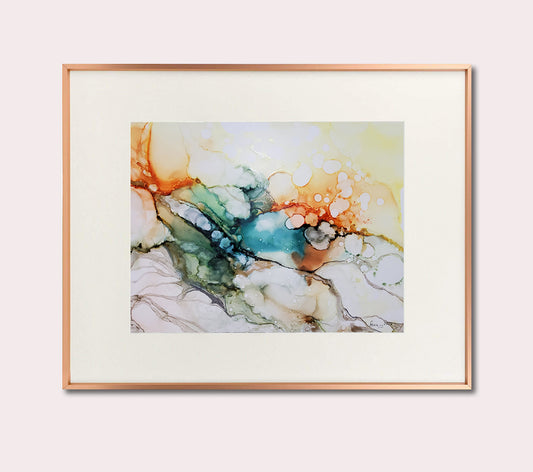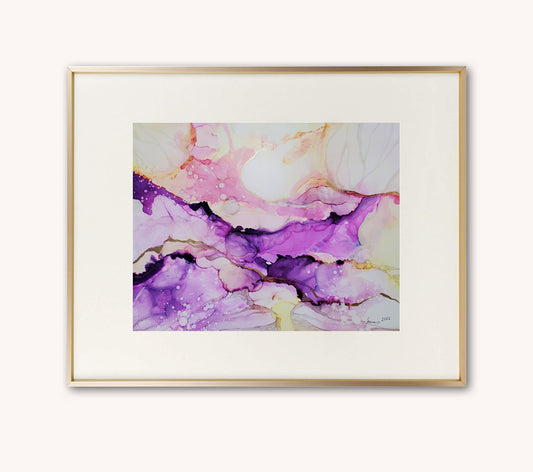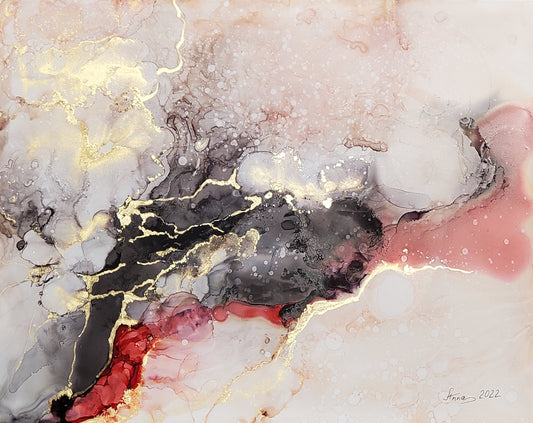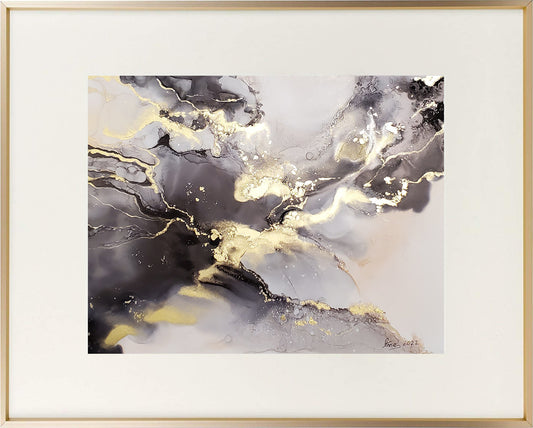
Mark Bradford - Cobra, 2022
Art has been a fundamental part of human expression for millennia. From the intricate cave paintings of our distant ancestors to the contemporary, cutting-edge works displayed in galleries worldwide, art has evolved in countless ways. Abstract art is one of the most intriguing and controversial forms of artistic expression. It challenges our perceptions, stirs our emotions, and often commands astronomical prices in the art market. But what exactly makes an abstract painting truly valuable?
In this exploration of the value of abstraction in the art world, we will delve into the essence of abstract art, its place in contemporary society, and the various factors that contribute to its valuation. By the end of this article, you will gain a deeper understanding of what makes abstract paintings so valuable and why they continue to captivate art collectors, critics, and enthusiasts alike.
Abstract Art: A Brief Overview
Abstract art is a form of artistic expression that does not attempt to represent reality in a literal sense. Instead, it relies on shapes, colors, and forms to convey a sense of emotion, concept, or idea. Abstract art can be traced back to the late 19th and early 20th centuries, where artists like Wassily Kandinsky, Kazimir Malevich, and Piet Mondrian pioneered this groundbreaking style. They sought to break away from traditional representation and explore the power of non-representational art.
One of the defining features of abstract art is its inherent ambiguity. It allows the viewer to interpret the work in a highly personal way. The lack of concrete subject matter often invites a wide range of emotional responses and intellectual engagement. This ambiguity is both the strength and challenge of abstract art, as it can confound some viewers while profoundly resonating with others.
The Place of Abstraction in Contemporary Society
Abstract art is not a relic of the past; it is very much alive and relevant in contemporary society. In an era characterized by rapid technological advancements and changing social dynamics, abstract art provides a unique means of expression and interpretation. Here, we'll explore why abstract art continues to be embraced and valued by art collectors around the world.
1. Emotion and Expression
One of the primary reasons abstract art remains relevant is its ability to convey emotion and personal expression. In a world filled with complexities and constant change, abstract art offers a visual language that can communicate deep and complex feelings without the constraints of literal representation. An artist's emotions and thoughts can be translated into abstract compositions, inviting viewers to connect on a profound level.
2. Exploration of Aesthetics
Aesthetics, the branch of philosophy concerned with the nature of beauty and art, plays a significant role in abstract art. Abstract artists often experiment with color, form, and composition to explore new realms of aesthetics. This experimentation is not limited to the artists alone; it extends to the viewers, who engage in their own aesthetic journey as they interpret and appreciate abstract works.
3. Evolving Perspectives
Society's perspectives and values continually evolve, and abstract art reflects this ongoing transformation. It challenges viewers to question preconceived notions and explore new ways of seeing and thinking. In doing so, abstract art fosters a spirit of innovation, curiosity, and open-mindedness in its audience.
4. Adaptability
In an increasingly globalized world, where cultures intermingle, abstract art transcends language and cultural barriers. Its universal appeal allows people from diverse backgrounds to engage with the art form, fostering a sense of unity and shared human experience.
Valuing Abstract Art: What Determines Worth?
The question of what makes an abstract painting valuable is complex and multifaceted. There is no single formula for determining the worth of a piece of abstract art, but several key factors significantly influence its value. Let's delve into these determinants to gain a better understanding of what makes an abstract painting truly valuable.
1. Artist's Reputation
An artist's reputation is often a crucial factor in determining the value of their abstract work. Established artists with a track record of successful exhibitions, critical acclaim, and a strong collector base tend to command higher prices for their art. Notable abstract artists like Jackson Pollock, Mark Rothko, and Yayoi Kusama have created a legacy that continues to influence the art world and drive up the value of their work.
2. Innovation and Originality
Innovation and originality are highly prized in the world of abstract art. Artists who push the boundaries of the medium, introduce novel techniques, or develop their unique style often stand out. The ability to capture the viewer's attention with fresh and captivating concepts is a hallmark of valuable abstract art.
3. Historical Significance
Some abstract artworks hold historical significance due to their influence on art movements or their connection to critical moments in art history. For example, the works of the pioneers of abstract art, such as Kandinsky and Malevich, are not only admired for their artistic merit but also revered for their role in shaping the course of art history.
4. Size and Materials
The size of an abstract painting and the materials used can influence its value. Larger works often command higher prices, as they require more time and resources to create. Additionally, the choice of materials, such as rare pigments or non-traditional surfaces, can add uniqueness and value to a piece.
5. Condition and Provenance
The condition of an artwork and its provenance, or ownership history, are vital considerations. Well-preserved pieces in excellent condition are more desirable to collectors. Provenance, including the chain of ownership and exhibition history, can add authenticity and prestige to a work, further enhancing its value.
6. Critical Acclaim
Receiving positive feedback from art critics and scholars can significantly boost the value of an abstract painting. Favorable reviews and academic recognition can draw the attention of serious collectors and institutions, further solidifying an artwork's worth.
7. Market Demand
Art, like any commodity, is subject to market forces. Market demand can lead to bidding wars at auctions, driving up prices. The popularity of abstract art in the market can be influenced by trends, collector preferences, and economic conditions.
Art as an Investment
Investing in art, including abstract paintings, has become increasingly common. While some collectors are primarily motivated by the aesthetic and emotional appeal of the artwork, others view art as a financial investment. This raises the question: can abstract art be a sound investment?
1. Historical Performance
Historically, art, including abstract art, has shown the potential for substantial financial returns. Notable sales of abstract paintings for exorbitant sums have garnered media attention, bolstering the perception of art as an investment. The increased interest in art as an asset class has driven more individuals and institutions to explore art investment opportunities.
2. Diversification
For investors, art can serve as a diversification tool. It is a non-correlated asset, meaning its performance does not necessarily follow the ups and downs of traditional financial markets. This can provide a level of stability in an investment portfolio.
3. Expert Guidance
Art investment requires a level of expertise and an understanding of market trends, which may necessitate the assistance of art consultants, advisors, or auction specialists. These experts can help investors navigate the art market and make informed decisions.
4. Risks and Volatility
Despite the potential for financial gain, art investment is not without risks. The art market can be volatile, and the value of artworks can fluctuate. Additionally, liquidity can be a concern, as selling an artwork can take time and may involve substantial transaction costs.
It's important to note that investing in art should not be solely driven by financial considerations. The primary motivation for acquiring art, particularly abstract art, should be a genuine appreciation for the work itself.
The Role of Art Critics and Historians
Art critics and historians play a significant role in shaping the perception and value of abstract art. Their analysis, interpretation, and critique can significantly impact an artwork's reputation and, consequently, its market value.
1. Interpretation and Context
Art critics delve into the meaning, context, and aesthetics of abstract art. Their interpretations can shed light on an artwork's significance and enrich viewers' understanding of the piece. Critics often frame abstract art within the broader narrative of art history, drawing connections to past movements and artists.
2. Canonization
Art historians and critics contribute to the canonization of abstract artists and their works. The inclusion of an artist in the art historical canon can elevate their status and ensure their lasting legacy. Art history books, museum exhibitions, and academic courses all play a role in canonization.
3. Shaping Taste
Art critics and historians influence the taste and preferences of art collectors and enthusiasts. Their positive reviews and analysis can generate interest in particular artists or styles, leading to increased demand and, subsequently, higher prices.
4. Controversy and Debate
Abstract art often sparks controversy and debate, and this discourse can be fueled by the opinions of art critics. Disagreements among critics and scholars can lead to differing assessments of an artwork's value and importance.
The Intersection of Aesthetics and Value
The appreciation of abstract art is intricately tied to aesthetics, which is the study of beauty and taste. As viewers engage with abstract works, they are influenced by their individual aesthetic sensibilities. This interplay between aesthetics and value is a critical aspect of understanding why abstract paintings hold such significance.
1. Subjective Aesthetics
Aesthetics are inherently subjective. What one person finds beautiful or meaningful, another may not. Abstract art embraces this subjectivity by inviting viewers to interpret and appreciate the work based on their personal aesthetic inclinations.
2. Emotional Response
Aesthetics and emotions are closely intertwined. Abstract art often elicits strong emotional responses, which, in turn, influence the viewer's aesthetic judgment. An artwork that resonates emotionally is more likely to be deemed valuable by the observer.
3. Evolving Aesthetic Trends
Aesthetic trends in art can evolve over time, shaping how abstract art is perceived. What was considered avant-garde and unconventional in the past may become classic and revered in the present. These shifts in aesthetic trends can affect the value of abstract artworks.
4. Cultural and Societal Influences
Cultural and societal influences play a role in shaping aesthetics. The prevailing values, beliefs, and visual culture of a society can impact how abstract art is received and valued. Art is, to some extent, a reflection of its cultural and historical context.
The Art Market: A Complex Ecosystem
The art market is a dynamic and complex ecosystem that significantly influences the value of abstract paintings. Let's explore the various facets of the art market and how they impact the worth of abstract artworks.
1. Auction Houses
Auction houses like Sotheby's, Christie's, and Phillips are key players in the art market. They facilitate the sale of valuable artworks, including abstract paintings, to a global clientele. High-profile auctions can generate considerable attention and competitive bidding, leading to record-breaking sales.
2. Galleries
Art galleries, both physical and online, act as intermediaries between artists and collectors. They curate exhibitions, promote artists' work, and facilitate sales. Established galleries can enhance the visibility and reputation of abstract artists, contributing to the value of their art.
3. Art Fairs
Art fairs, such as Art Basel and Frieze, provide a platform for artists and galleries to showcase their work to a diverse and international audience. These events often serve as a barometer for current art market trends, attracting collectors, curators, and art enthusiasts.
4. Art Advisors
Art advisors and consultants offer expertise and guidance to collectors, helping them navigate the art market and make informed purchasing decisions. Their knowledge can influence which artworks gain recognition and value.
5. Art Authentication
The authenticity of an artwork can significantly impact its value. Art authentication experts verify the legitimacy of artworks, which is particularly important for works by renowned artists, as forgeries can diminish the value of the artist's entire body of work.
6. Art Investment Funds
Art investment funds pool the resources of multiple investors to acquire artworks. These funds are often managed by art experts and provide a vehicle for individuals to invest in art without owning the physical artwork. The success of such funds can contribute to the perception of art as a valuable asset class.
Conclusion
The value of an abstract painting is a multifaceted concept that transcends monetary worth. It encompasses the artist's reputation, the emotional impact of the work, the influence of art critics and historians, and the ever-changing dynamics of the art market. Abstract art continues to flourish in contemporary society, offering a means of expression, exploration of aesthetics, and engagement with evolving perspectives.
Understanding the value of abstract art involves a deep appreciation for its subjective nature and its capacity to evoke emotions, challenge perceptions, and inspire intellectual discourse. Whether viewed as a form of personal expression, a cultural artifact, or a potential financial investment, abstract art remains a captivating and ever-evolving facet of human creativity.
The next time you encounter an abstract painting, take a moment to consider the factors that contribute to its value. Beyond the strokes and colors lie a wealth of history, emotion, and human experience, waiting to be explored and appreciated. In the end, it is this very depth that makes an abstract painting truly valuable.
Intrigued by the fascinating world of abstract art? Your artistic journey doesn't have to end here. Explore a mesmerizing collection of captivating and modern abstract artworks by visiting our Abstract Art Collection and Shop. Our gallery is a treasure trove of creativity, where you can not only see but also acquire unique pieces that resonate with your aesthetic sensibilities. Dive into a realm of imagination, emotion, and innovation as you discover the transformative power of abstract art. Don't miss the opportunity to enrich your surroundings with these thought-provoking creations. Start your exploration now and let the art on this page inspire your soul.











